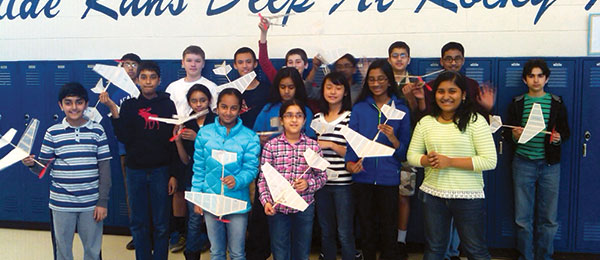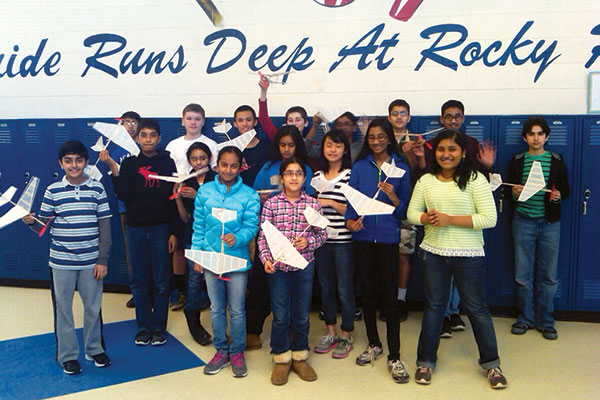A Journey in Mentoring

Written by Don Szczur In the Air Column As seen in the December 2014 issue of Model Aviation.
AMA member Don Szczur, an electrical engineer and accomplished competition pilot, was challenged by a friend to give back to the hobby. He chose to do so by educating youth. Don’s son, Joseph, started middle school in 2013 and was looking for an activity that would help him make friends while sharing his passion for model aviation. This activity became the Rocky Run Middle School Aerospace Engineering Model Airplane Student Club (MASC). By the time the club celebrated its one-year anniversary, it had grown from six active members to 17. The students recruited more members by adding Aerospace Engineering to the club’s name. This also captured the attention of parents hungry for their kids to participate in science, technology, engineering, and math (STEM)-related after-school activities. Club members were introduced to engineering concepts that were reinforced by simple hands-on projects. Each meeting began with a 10-minute lesson on aerodynamics. Club members learned about the Wright brothers, then had to solve three problems: lift, stability, and control. Everything the club did circled back to learning about those three foundational problems. The first project was a walkalong glider. The aircraft is a great way to introduce aerodynamics, is simple to construct, and always flies well. These lightweight gliders sustain flight by being pushed along by a wave of air. A variety of walkalong glider designs were tested and the club chose a variant of the Jagwing walkalong glider design, cut from thin, hot-wire-sliced scrap foam block used for computer packaging. The second project was a basic rubber-powered stick model called the Z-15. The third project was the team-design concept in which club members applied what they had learned. Three teams designed their own glider from inexpensive foam material.

The 2014 Rocky Run Middle School Model Airplane Student Club (MASC).
The glider that flew best would be converted to RC for each student to fly. The teams had some innovative ideas and learned to budget their time for design, building, and test-flying. The winning design was a glider the students named Eclipse. It was rewarding to see the expressions on their faces as they watched it fly. The aircraft demonstrated how principles of stability and control were successfully applied. Don challenges you to take the plunge and give back to the hobby by being involved in activities that get young people engaged in model aviation. It will be a lifelong memory for you and the kids. For more information about forming a MASC, visit http://amaflightschool.org/programs/MASC on the AMA website. —submitted by Don Szczur










Add new comment